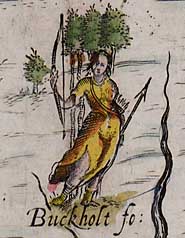|
|
About the project Modern interest in agriculture has focused on food-production. This is unsurprising. In the nineteenth century the worry was about feeding the burgeoning cities. Teaching in schools and research in universities reflected this. The ploughman, the medieval open fields, enclosure, and the price of bread were all major themes. Today the focus has shifted to the needs of a global population whose growth threatens to outpace its capacity. The issues are wider, around our perception, conservation, stewardship, and common-pool uses of the natural world. While the emphasis was on ploughland, meadow, and industrial timber, academics, professionals, and the public in general came to neglect and misunderstand what amounts to the other half of our island’s agrarian story: its Forests and Chases. These were legally bounded areas of hunting, gathering and grazing and they covered very large swathes of countryside – including whole counties. Between the eleventh and twentieth centuries they had their own locally-administered jurisdictions, separate from the Common Law, something which is significant in itself. However, what is of the greatest relevance to present-day issues is their purpose and day-to-day realities. The forests and forest law were devoted to protecting wild animals and vegetation on both private and common property, but there was more to them than 'venison and vert'. As well as protein on the hoof, the forests also provided fuel for heating and lighting the homes of rich and poor; materials for building and fencing; important supplements to diet; and much else. One important aspect was the recreation of princes and poachers. Another was the winning of minerals and with it the rise of industry. The purpose of our project is to encourage the rediscovery and appreciation of this complex but integrated, largely mutual economy, and to learn lessons from it for application to contemporary problems.
|
